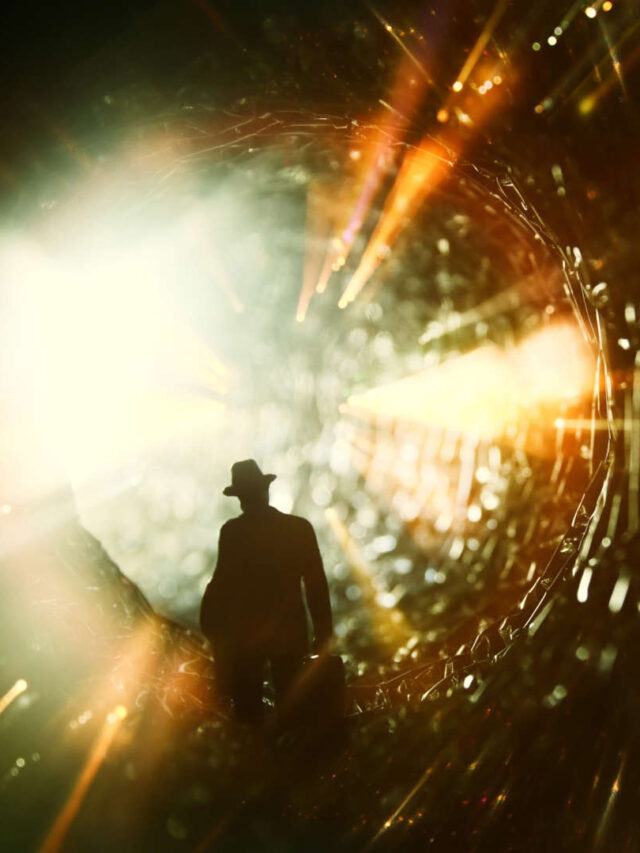Table of Contents
ToggleDetecting Alien Warp Drives: A New Frontier in Astronomy
Detecting alien warp drives could revolutionize our understanding of space-time and advanced extraterrestrial technologies. Learn how scientists are exploring this exciting possibility.

© Provided by Indy 100
Introduction
Detecting alien warp drives may seem like something out of science fiction, but a new paper suggests it might be possible. Scientists are looking at how these hypothetical devices could leave detectable signals in space-time, giving us a way to spot them from Earth. While warp drive technology is still theoretical, understanding how it might work and how we could detect it opens up fascinating possibilities for future space exploration.
What Are Warp Drives?
Warp drives are hypothetical devices that allow objects to travel faster than the speed of light. The concept was first popularized by science fiction, especially the Star Trek franchise. In theory, a warp drive creates a bubble around an object, known as a warp bubble. This bubble contracts the space-time in front of it and expands the space-time behind it. By moving the universe around the object, the warp drive enables it to travel from point A to point B faster than light.
Theoretical Foundation
The idea of a real-world warp drive was first proposed by physicist Miguel Alcubierre in 1994. His version, known as the Alcubierre drive, suggests that the physics might work, but it requires “negative energy” — a type of energy with a value below zero. Currently, we have no idea how to create or harness negative energy. Additionally, creating and controlling a warp bubble presents significant challenges, such as avoiding closed space-time loops that could violate the principles of causality.
Detecting Warp Drives through Gravitational Waves
According to a recent paper, we might detect warp drives by looking for specific ripples in space-time, known as gravitational waves. These waves could be generated by the formation and collapse of warp bubbles. Gravitational waves are already detectable with instruments like the Laser Interferometer Gravitational-Wave Observatory (LIGO), which helps scientists study cosmic events like black hole collisions and dark matter.
However, the gravitational waves produced by warp drives would be different from those currently detected by LIGO. To find them, scientists would need to search for waves with different wavelengths, a process that could be time-consuming and expensive without any guarantee of success.
Challenges and Skepticism
The idea of detecting alien warp drives is met with skepticism. One major challenge is the need to identify specific gravitational wave signatures that would indicate the presence of a warp drive. Current technology is not fine-tuned for this purpose, and there’s a significant risk that extensive searching might not yield any results. Despite these challenges, some scientists believe it’s worth exploring due to the potential breakthroughs it could bring.
Potential Impact of Detecting Warp Drives
If we could detect alien warp drives, it would be a groundbreaking discovery. It would suggest that advanced extraterrestrial civilizations have developed technology far beyond our current capabilities. This could revolutionize our understanding of physics, space travel, and the potential for interstellar communication. It might also inspire new scientific inquiries and technological advancements here on Earth.
Future Prospects and Exploration
While warp drive technology is still a long way from being realized, the idea of detecting alien warp drives continues to capture the imagination of scientists and the public alike. Future advancements in technology and physics could bring us closer to understanding and potentially developing such devices. In the meantime, the search for gravitational waves that might indicate the presence of warp drives remains a tantalizing prospect for astronomers.
Conclusion
Detecting alien warp drives represents an exciting and speculative frontier in astronomy. While the technology and theoretical understanding required to create and detect warp drives are still beyond our reach, the potential implications of such discoveries are immense. By continuing to explore the possibilities, scientists hope to push the boundaries of our knowledge and uncover new aspects of the universe.
The journey to detect alien warp drives may be filled with challenges and uncertainties, but it embodies the spirit of scientific exploration and curiosity. As we look to the stars, the quest to find evidence of advanced extraterrestrial technologies reminds us of the limitless possibilities that await us in the cosmos.
ALSO READ:
“Earth’s Early History: 3 Shocking Discoveries That Will Blow Your Mind!”